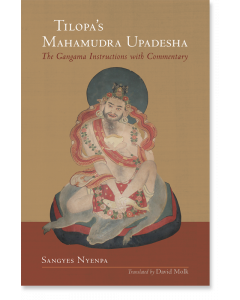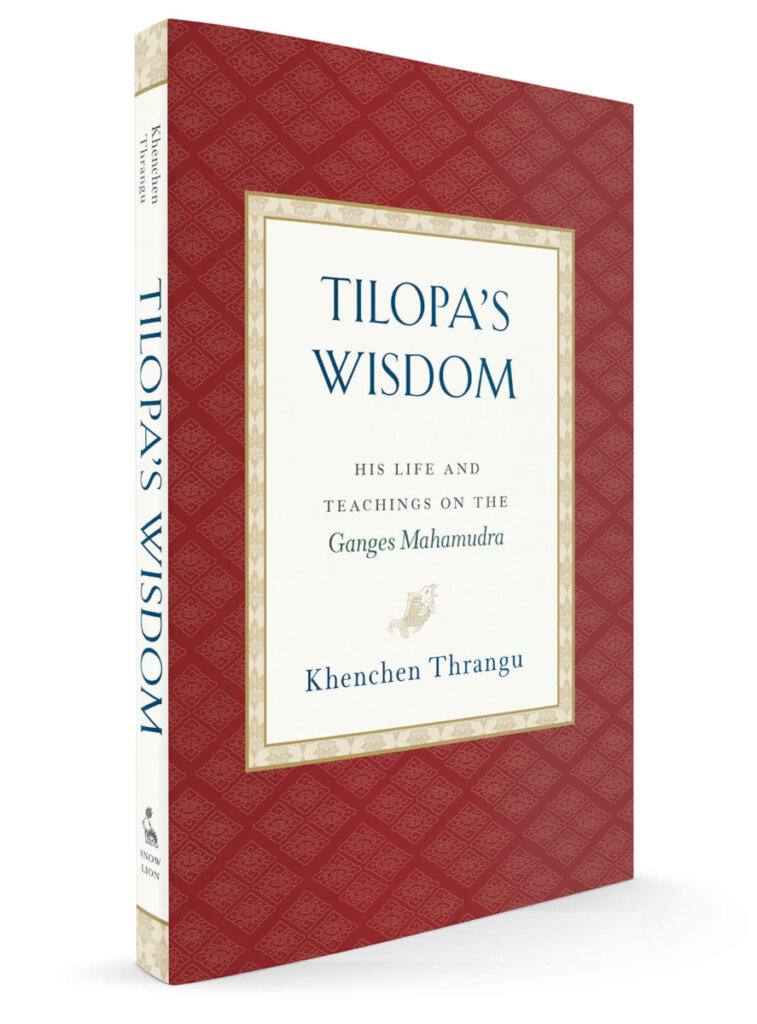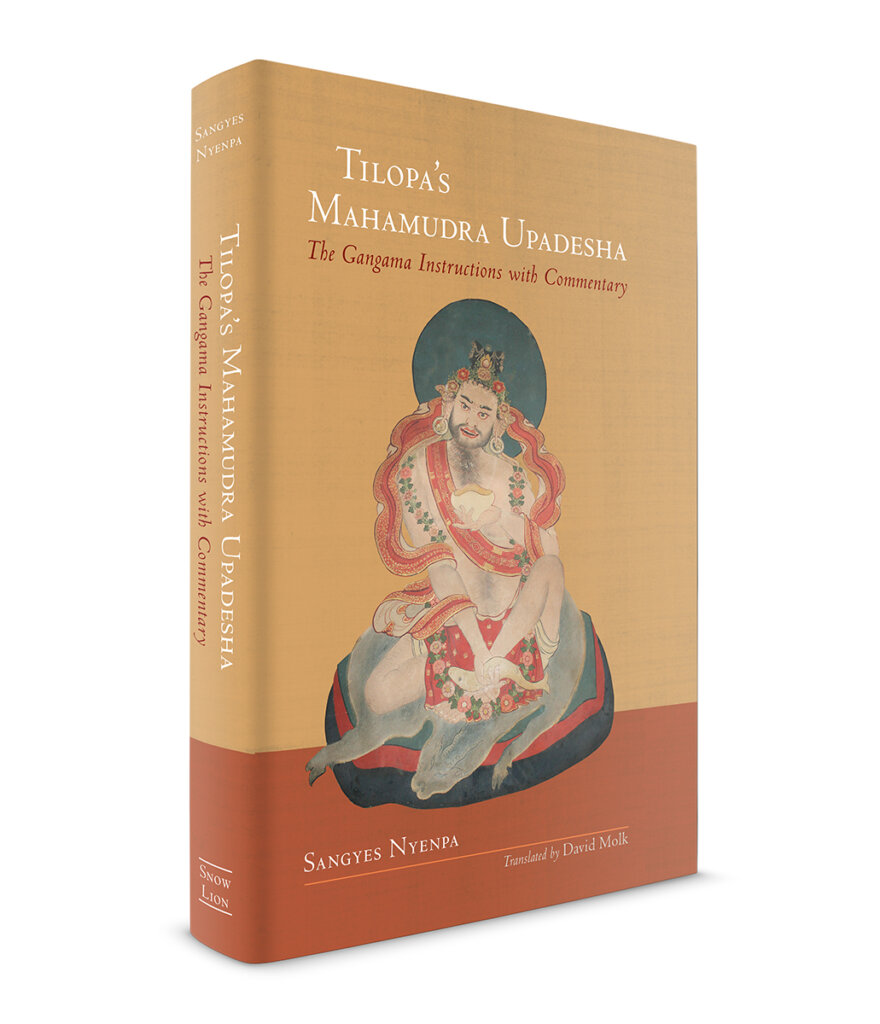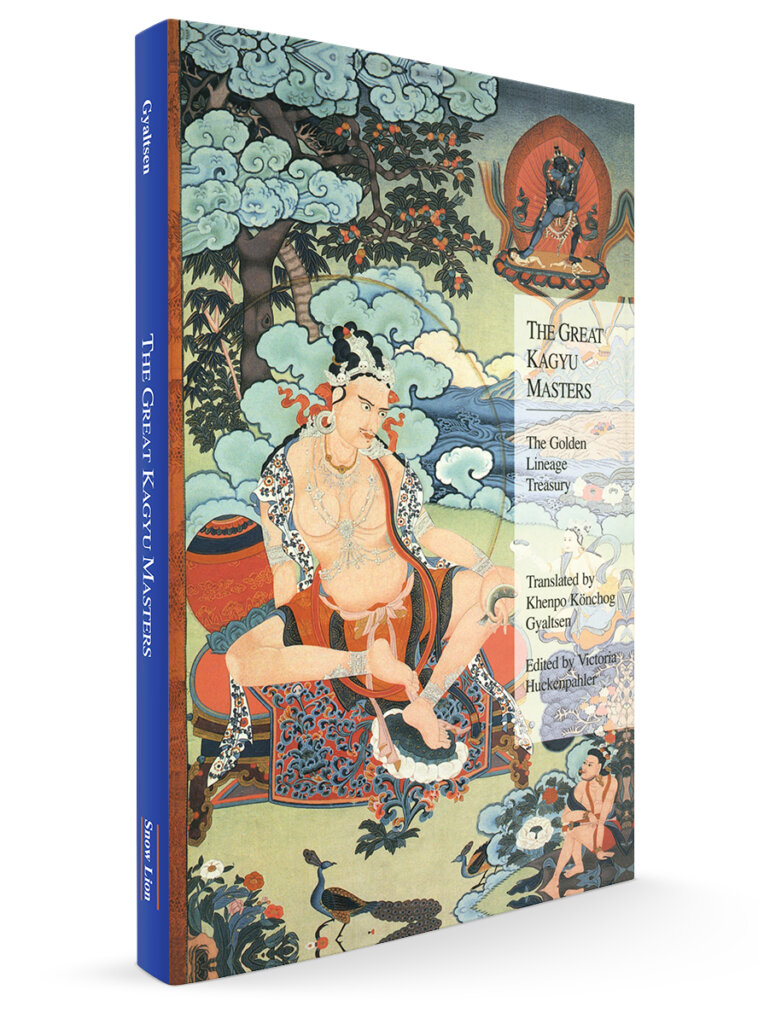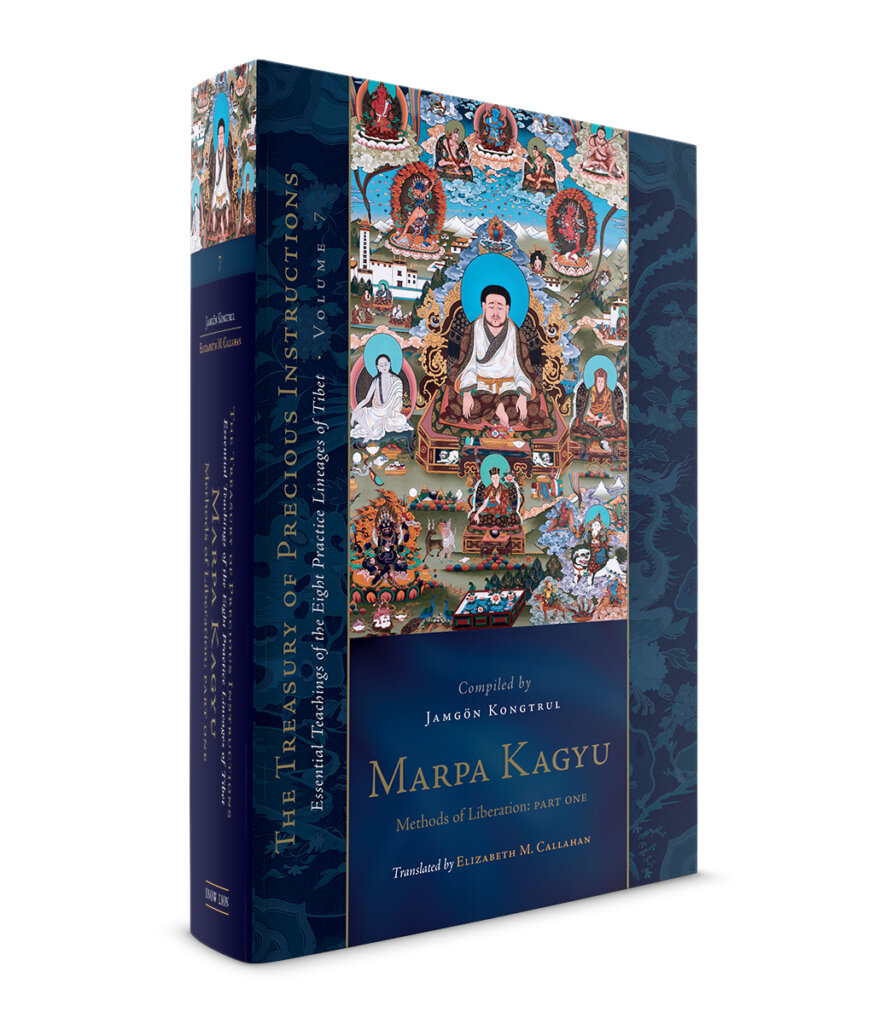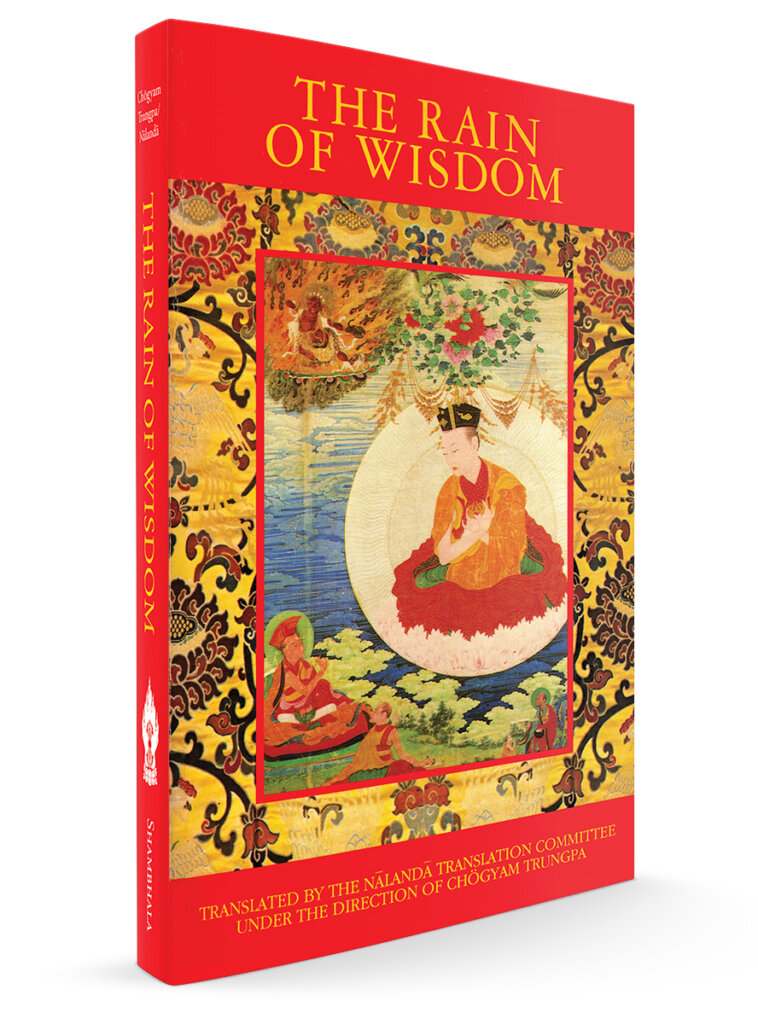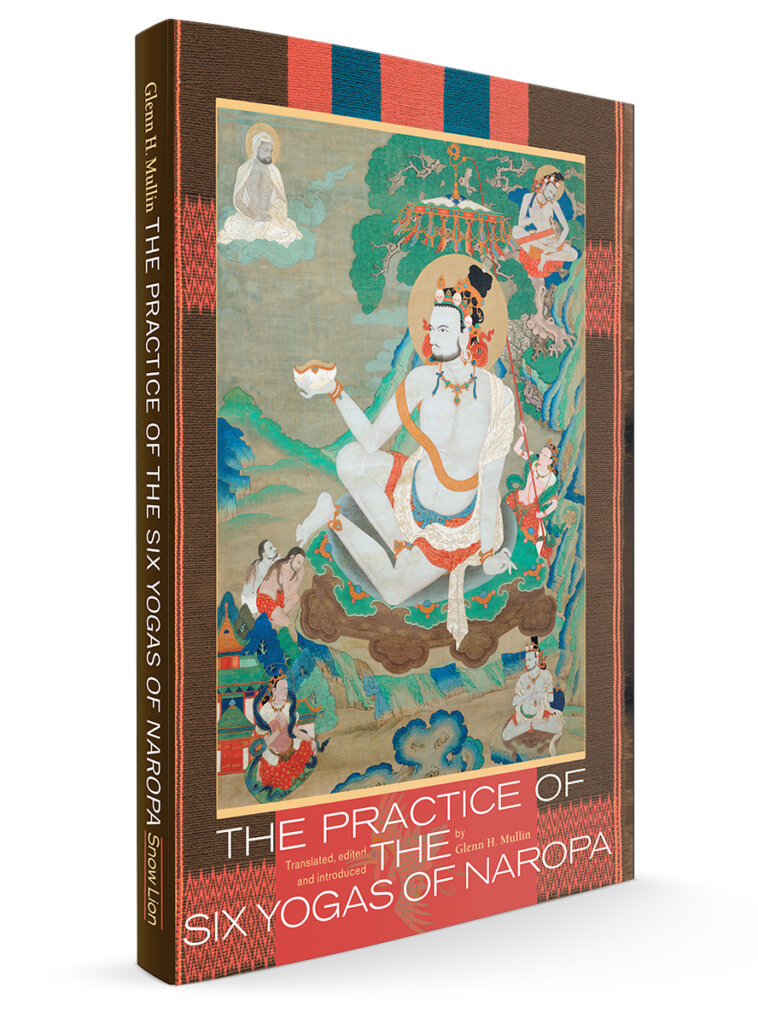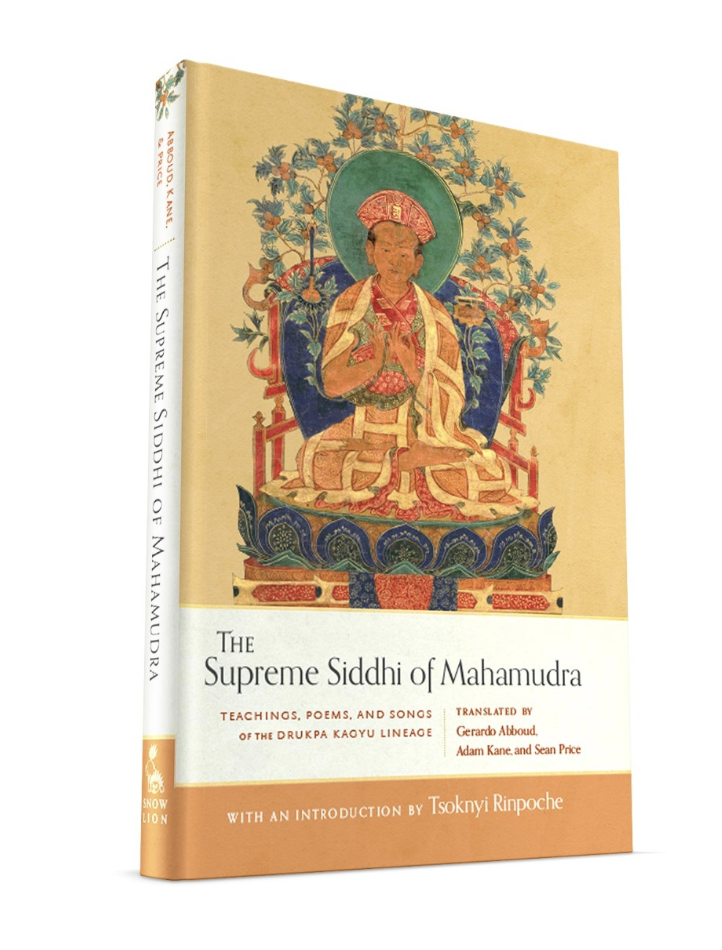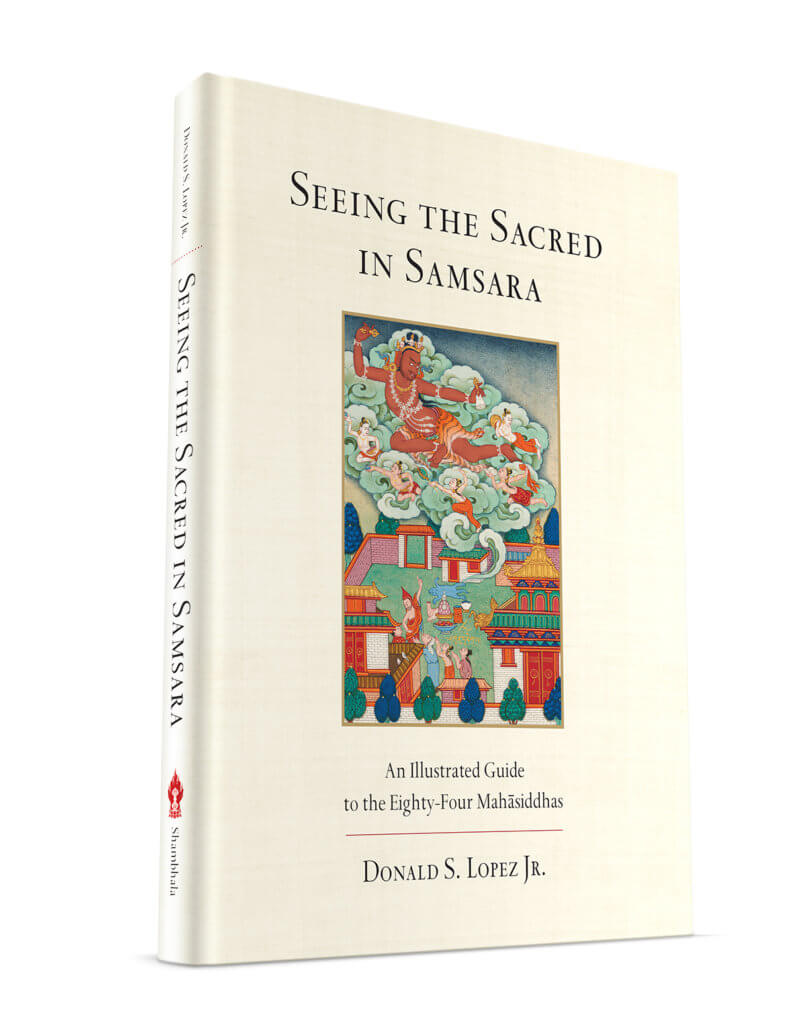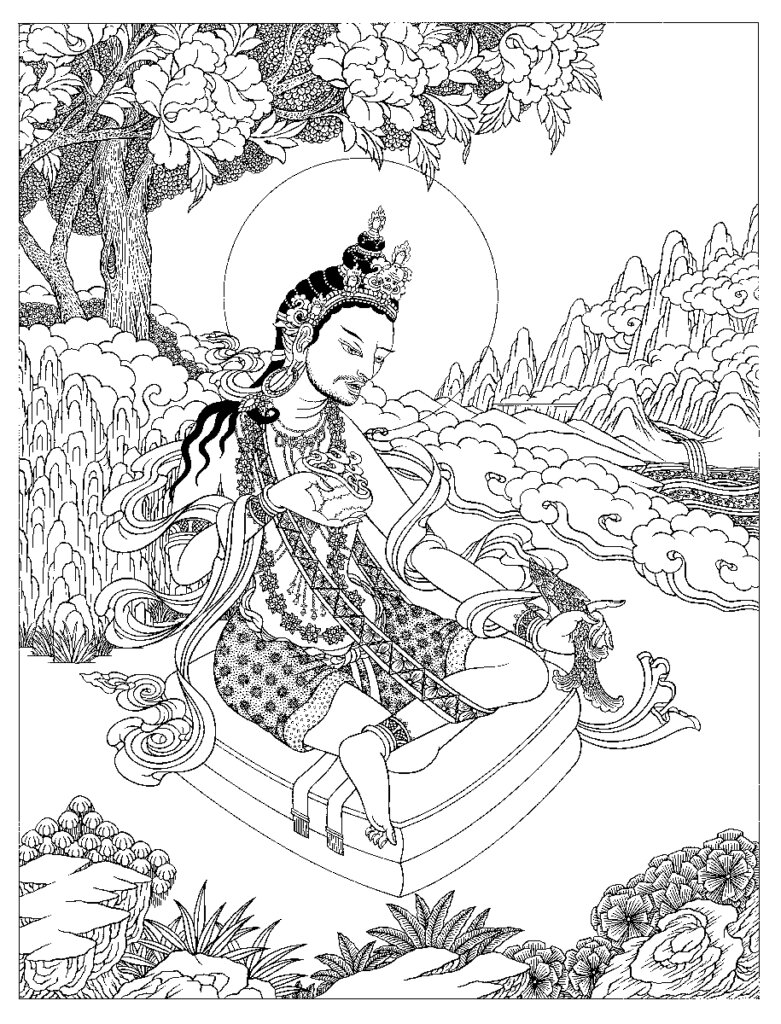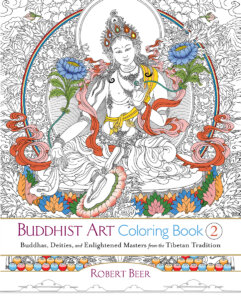

Sangyes Nyenpa Rinpoche
The Tenth Sangyes Nyenpa Rinpoche was born into a family of practitioners at the temple of Paro Taktsang in Bhutan. Recognized by His Holiness the Sixteenth Karmapa and educated at Rumtek, Sikkim, Sangyes Nyenpa Rinpoche is one of the Kagyu lineage’s most accomplished and respected tulkus. He is based in Kathmandu, Nepal, and teaches worldwide.
Sangyes Nyenpa Rinpoche
GUIDES
Tilopa: A Guide for Readers to the Indian Mahasiddha

The following short biography of Tilopa is from Indestructible Truth: The Living Spirituality of Tibetan Buddhism:
Tilopa is born a brahman (member of the priestly caste) and, as a young man, renounces the world and takes monastic ordination, living in a monastery presided over by his uncle. After a short period, however, he has a vision of a dakini who gives him tantric initiation and instruction and sets him to meditating. She tells him, "Now speak like a madman and, after throwing off your monk’s robes, practice in secret.’’1 Then abruptly she disappears. Like other tantric practitioners, through abandoning the monastic life, appearing to be mad, and practicing in secret, Tilopa is enjoined to separate himself from conventional values and pursuits. In particular, by acting crazy, he puts himself in the category of outcaste, living beyond the pale of Hindu society, reviled and abused by others. All of this is to enable him to separate himself from the deceptive comforts and security of egoic existence within society. Tilopa follows the dakini’s instructions, wandering from place to place and meditating. Encountering obstacles, he seeks out and receives instruction from several gurus, all of them siddhas. Eventually, he is instructed to go to Bengal and to carry out his practice while pounding sesame seeds by day and acting as the servant of a prostitute by night. In these circumstances, defiling in the extreme for a brahman, he meditates, some sources say for twelve years. Having completed this phase of his practice, Tilopa realizes that he needs to withdraw completely from the provocations of ordinary life. He goes to Bengal and enters into retreat, in a tiny grass hut that he builds for himself. There, finally, he comes face-to-face with reality, in the person of the celestial buddha Vajradhara in the highest celestial realm. He later remarks, "I have no human guru. My guru is the Omniscient One. I have conversed directly with the Buddha."
Following his realization, Tilopa wanders about, bringing others onto the path and instructing them in the Vajrayana way. He becomes renowned as a powerful and unpredictable master, who in the service of the dharma, like other siddhas, often performs actions considered shocking or scandalous in a conventional setting. He spends much of his time in cremation grounds, practicing and teaching, as is common for the other siddhas. When debating with non-Buddhists, he often makes his points by means of miracles rather than discursive argument. Although Tilopa had several human teachers, his role as progenitor of the Kagyu¨ lineage stems from his having met the celestial buddha Vajradhara face-to-face and received teachings directly from him. Tilopa’s lineage includes teachings on mahamudra received directly from Vajradhara; practices of inner yoga that make up the ‘‘six yogas of Naropa’’; and anuttara-yoga tantra transmissions including father, mother, and nondual tantras.
Essential Texts by and about Tilopa
The Ganges Mahamudra Song of Realization
All lineages of Mahamudra meditation have their source in a verse teaching—a “song of realization”—sung by the Mahasiddha Tilopa to his disciple Naropa on the banks of the Ganges River more than a thousand years ago. In Sanskrit it is known as the Mahāmudropadeśa and in Tibetan: phyag rgya chen po’i man ngag. Since that time, the meaning of Tilopa’s instructions has been passed directly from master to disciple in a continuous stream that exists unbroken to this day.
Paperback | Ebook
$19.95 - Paperback
Tilopa's Wisdom: His Life and Teachings on the Ganges Mahamudra
Most traditions of Mahamudra meditation can be traced back to the mahasiddha Tilopa and his Ganges Mahamudra, a “song of realization” that he sang to his disciple Naropa on the banks of the Ganges River more than a thousand years ago. In this book, Khenchen Thrangu, a beloved Mahamudra teacher, tells the extraordinary story of Tilopa’s life and explains its profound lessons. He follows this story with a limpid and practical verse-by-verse commentary on the Ganges Mahamudra, explaining its precious instructions for realizing Mahamudra, the nature of one’s mind. Throughout, Thrangu Rinpoche speaks plainly and directly to Westerners eager to receive the essence of Mahamudra instructions from an accomplished teacher.
Hardcover | Ebook
$34.95 - Hardcover
Tilopa's Mahamudra Upadesha: The Gangama Instructions with Commentary
By Sangyes Nyenpa Rinpoche, translated by David Molk
This book offers the reader a rare glimpse into the Mahamudra oral transmission, given in a traditional Tibetan context by one of the lineage’s most learned and accomplished contemporary masters.
Mahamudra meditation, while highly advanced, is yet simple, practical, and accessible for anyone, because what is identified and meditated upon is the very nature of one’s own mind. In Sangyes Nyenpa Rinpoche’s words, “The distinction between deception and liberation lies in whether we understand the ever-present nature of our own mind or not. Knowing our own face is liberation; not knowing our own face is samsara. This is not something far distant from us.”
The instructions are ideal for Westerners because the root text is manageable and Rinpoche has provided an outline of his own composition that makes it easily understandable. He explains terminology with frequent comparisons between Dzogchen and Mahamudra, quotes prolifically from scripture, gives clear examples, and generally cajoles, admonishes, and encourages his listeners to be true to their own spiritual path.
Books Featuring Tilopa
Paperback | Ebook
$22.95 - Paperback
The Great Kagyu Masters: The Golden Lineage Treasury
Compiled by Dorje Dze Öd, translated by Khenchen Konchog Gyaltshen Rinpoche
The Golden Lineage Treasury was compiled by Dorje Dze Öd a great master of the Drikung lineage active in the Mount Kailasjh region of Western Tibet. This text of the Kagyu tradition profiles and the forefathers of the tradition including Vajradhara, the Buddha, Tilopa, Naropa, the Four Great Dharma Kings of Tibet, Marpa, Milarepa, Atisha, Gampopa, Phagmodrupa, Jigten Sumgon, and more.
The chapter on Tilopa is 22 pages long.
Hardcover | Ebook
$49.95 - Hardcover
Marpa Kagyu, Part One: Methods of Liberation: Essential Teachings of the Eight Practice Lineages of Tibet, Volume 7
The Treasury of Precious Instructions
By Jamgon Kongtrul Lodro Thaye
The seventh volume of this series, Marpa Kagyu, is the first of four volumes that present a selection of core instructions from the Marpa Kagyu lineage of Tibetan Buddhism. This lineage is named for the eleventh-century Tibetan Marpa Chokyi Lodrö of Lhodrak who traveled to India to study the sutras and tantras with many scholar-siddhas, the foremost being Naropa and Maitripa. The first part of this volume contains source texts on mahamudra and the six dharmas by such famous masters as Saraha and Tilopa. The second part begins with a collection of sadhanas and abhisekas related to the Root Cakrasamvara Aural Transmissions, which are the means for maturing, or empowering, students. It is followed by the liberating instructions, first from the Rechung Aural Transmission. This section on instructions continues in the following three Marpa Kagyu volumes. Also included are lineage charts and detailed notes by translator Elizabeth M. Callahan.
There are the following works by Tilopa included:
- Ganges Mahāmudrā: Esoteric Instructions on Mahāmudrā
- Truly Valid Words: The Esoteric Instructions of the Ḍākinī
- Esoteric Instructions on the Six Dharmas
- The Short Text: The Wish-Fulfilling Gems of the Glorious Cakrasaṃvara Aural Transmission from the Tradition of Jetsun Rechungpa
Paperback | Ebook
$39.95 - Paperback
The Rain of Wisdom: The Essence of the Ocean of True Meaning
Translated by Nalanda Translation Committee under the guidance of Chogyam Trungpa Rinpoche.
The art of composing spontaneous songs that express spiritual understanding has existed in Tibet for centuries. Over a hundred of these profound songs are found in this collection of the works of the great teachers of the Kagyü lineage, known as the Practice Lineage of Tibetan Buddhism.
The chapter on Tilopa details his experiences with his teacher Matangi, receiving the abhisheka for Guhyasamaja, the prostitute Darima, and the famous doha on sesame oil. As Trungpa Rinpoche explains in the foreword of the book, "the songs of Tilopa point out the indivisibility of sarpsara and nirvana so that whatever arises is neither rejected nor accepted and we can recognize naked and raw coemergent wisdom on the spot."
The Practice of the Six Yogas of Naropa
Edited by Glenn Mullin
This book on the Six Yogas contains important texts on this esoteric doctrine, including original Indian works by Tilopa and Naropa and writings by great Tibetan lamas. It contains an important practice manual on the Six Yogas as well as other works that discuss the practices, their context, and the historical continuity of this most important tradition.
- The Oral Instruction of the Six Yogas by Tilopa
- Vajra Verses of the Whispered Tradition by Naropa
- Notes on "A Book of Three Inspirations" by Je Sherab Gyatso
- Handprints of the Profound Path of the Six Yogas of Naropa by Gyalwa Wensapa
- A Practice Manual on the Six Yogas of Naropa by Tsongkhapa
- The Golden Key: A Profound Guide to the Six Yogas of Naropa by the First Panchen Lama
Hardcover | Ebook
$24.95 - Hardcover
The Supreme Siddhi of Mahamudra: Teachings, Poems, and Songs of the Drukpa Kagyu Lineage
Translated by Gerardo Abboud, Sean Price, and Adam Kane
The Drukpa Kagyu lineage is renowned among the traditions of Vajrayana Buddhism for producing some of the greatest yogis from across the Himalayas. After spending many years in mountain retreats, these meditation masters displayed miraculous signs of spiritual accomplishment that have inspired generations of Buddhist practitioners. The teachings found here are sources of inspiration for any student wishing to genuinely connect with this tradition.
These translations include Mahamudra advice and songs of realization from major Tibetan Buddhist figures such as Gampopa, Tsangpa Gyare, Drukpa Kunleg, and Pema Karpo, as well as modern Drukpa masters such as Togden Shakya Shri and Adeu Rinpoche. This collection of direct pith instructions and meditation advice also includes an overview of the tradition by Tsoknyi Rinpoche.
The first chapter, on Tilopa, is another beautiful translation of the Ganges Mahamudra.
Combined with guidance from a qualified teacher, these teachings offer techniques for resting in the naturally pure and luminous state of our minds. As these masters make clear, through stabilizing the meditative experiences of bliss, clarity, and nonthought, we will be liberated from suffering in this very life and will therefore be able to benefit countless beings.
Translator on Gerardo Abboud on The Supreme Siddhi of Mahamudra
Hardcover | Ebook
$29.95 - Hardcover
Seeing the Sacred in Samsara: An Illustrated Guide to the Eighty-Four Mahāsiddhas
By Donald S. Lopez Jr.
This exquisite full-color presentation of the lives of the eighty-four mahāsiddhas, or “great accomplished ones,” offers a fresh glimpse into the world of the famous tantric yogis of medieval India. The stories of these tantric saints have captured the imagination of Buddhists across Asia for nearly a millennium. Unlike monks and nuns who renounce the world, these saints sought the sacred in the midst of samsara. Some were simple peasants who meditated while doing manual labor. Others were kings and queens who traded the comfort and riches of the palace for the danger and transgression of the charnel ground. Still others were sinners—pimps, drunkards, gamblers, and hunters—who transformed their sins into sanctity.
This book includes striking depictions of each of the mahāsiddhas by a master Tibetan painter, whose work has been preserved in pristine condition. Published here for the first time in its entirety, this collection includes details of the painting elements along with the life stories of the tantric saints, making this one of the most comprehensive works available on the eighty-four mahāsiddhas.
The Tilopa image from this book is pictured at the top of this page and tells the story of what is being depicted.
Additional Resources on Tilopa
Lotsawa House hosts at least one work by Tilopa


